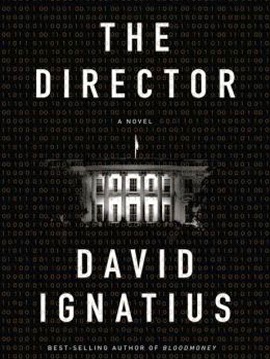What's In The Box is about relentlessly pursuing an artist's vision regardless of any pushback and punches. Those things, they promise, will only make them stronger. It's compelling as a tightly written, sharply delivered composition, but what truly makes it stand out is that the band delivers it as convincingly as they could have ten years ago.
That's largely the point. Dan O'Conner (guitar/vocals), Alan Day (guitar/vocals), and Jake Massucco (drummer) might not be young punks from Doherty Memorial High School anymore, but they can lay down an onslaught of noise. Joe Weiss (bass) too, of course. What's In The Box is everything anyone might expect from the Worcester foursome since the departure of Josh Lyford.
Go Down In History shaves years off Four Year Strong.
Along with the opener, title track Go Down In History epitomizes the band's relentless determination to make their mark. They pursue it with their eyes wide open. The lyrics grab hold of the concept that all our days are numbered so we have to make them count. There isn't time to waste looking back.
The message is rock solid optimism that the best is ahead. And they deliver those lines perfectly in the most anthemic track on album. Even people who see Four Year Strong as a more pop punk band will note that they've broken away from the hallmarks of the genre. They're too busy living to whine about anything.
As good as Go Down In History is, the best track on the album leans even more on melodic hardcore. Tread Lightly is a take-on-all-challenges track that catches the band between heartbreak and another breath. It's in those moments, when someone has dragged you down, that you recall all those people who have always stood behind you.
Tred Lightly is the most intricate composition in EP, with 90 degree turns held together by the melody and soaring chorus. It will easily be added to the short list of best songs ever written by the band. There isn't a stitch that could be improved upon.
Living Proof Of A Stubborn Youth and So You're Saying There's A Chance... fall right line with the rest of the EP. Living Proof is some poignant and upbeat wisdom from someone looking back on their life. It's a refreshing take on hindsight being 20-20, with an authentic twist. Four Year Strong takes pride in the fact they've survived but some steps on the path they took might be best avoided. You can't get more honest than that.
You're Saying There's A Chance... is a brilliant call out from Dumb And Dumber. Without the context of the film, someone might find a bit of envy in the tone as O'Conner and Day call out the challenges that anyone in the audience might be facing and then saying they would love to have that once again. But within that context, it takes on the shape of a shake-off song with the most memorable lines a nice bit of soaring sarcasm. Take your pick. You'll want to sing along anyway.
Go Down In History By Four Year Strong Pushes 8.1 On The Liquid Hip Richter Scale.
More than anything else, Go Down In History positions the band and its new label to take these five tracks on tour for a few months before heading back into the studio to produce a proper full lenghth. There is no question that Four Year Strong has the chops to make it as a foursome rather than replace Lyford outright.
Go Down In History by Four Year Strong is available on Amazon. You can also download the album from iTunes. For a little more, Go Down In History is also available as a CD from Barnes & Noble. Facebook lists tour information.
![Liquid [Hip]](https://blogger.googleusercontent.com/img/b/R29vZ2xl/AVvXsEjAFBQPqS7J0-rrttNoRYSsuwIePPZf4Nq6sqDioK1zzVQXJIQXKzq_NVNI4n6h3inuRQFBKOcJeZeSufkdHHIOxbSWyBjTjTxgKEQGyPzdwvkEEeECh4bI5YEGk4RWGUINSd7vulPQsCA/s1600-r/liquidhip.jpg)


















